
THANK YOU FOR YOUR REQUEST
Thank you very much for your interest in EIDETIC MARKETING.
We look forward to working with you.
We will contact you soon.Thanks Again.

THERE WAS A PROBLEM WITH YOUR SUBMISSION.
Have you checked all the required fields?
We want you to write your Company, Name, E-mail, Budget, Country to Execute, Website URL, Wanted Services and Project Description.Thanks.
Category Archives: blog
Esports: United in a Socially Distant Era
October 1, 2020
[EIDETIC INSIGHT] Esports: United in a Socially Distant Era
by Kenneth Nienhuser
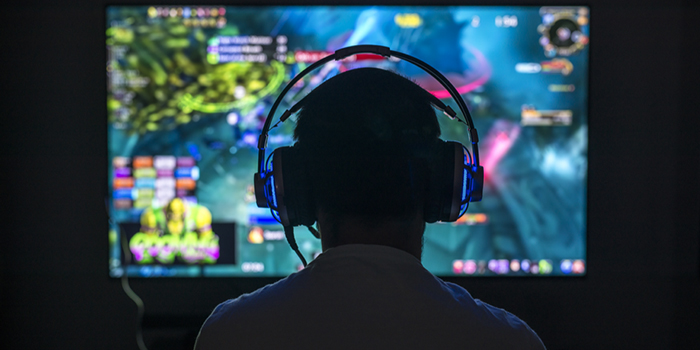
While the world has been changing rapidly over the course of 2020, with everyone now working or studying from home, one form of entertainment has fought to adapt to these changes and remain vigilant for fans around the world: esports.
COVID 19’s impact on the gaming industry has not been small by any stretch of the imagination. Events all around the world had to be canceled in response to the pandemic. As a result, new rules and formats had to be applied to ensure the safety of not only players and organizers, but the fans as well.
This, as we have seen, has led to esports leagues adopting a hybrid of streaming and online play, compared to the LAN formats we all know and love. It is a different feel, for sure, without the roar of the crowd cheering for their teams, or fans lining up after a match to shake hands with the winning players.
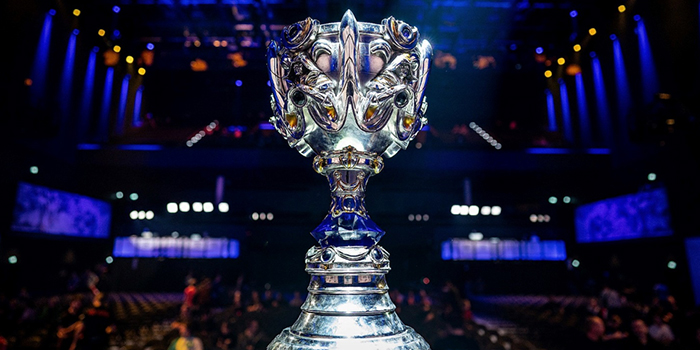
Source : Michal Konkol / Riot
“But. What has been the effect on viewership?”
If League of Legends serves as any indicator, they seem to be doing just fine. Better than fine, actually. LCS reported that this year’s summer split had higher viewership than it has had since 2016. To top that off, at Worlds, they’re getting more viewership than ever before. Dexerto reported that Day 1 of the LoL Worlds 2020 destroyed the previous year’s record with 1.15M peak viewers.
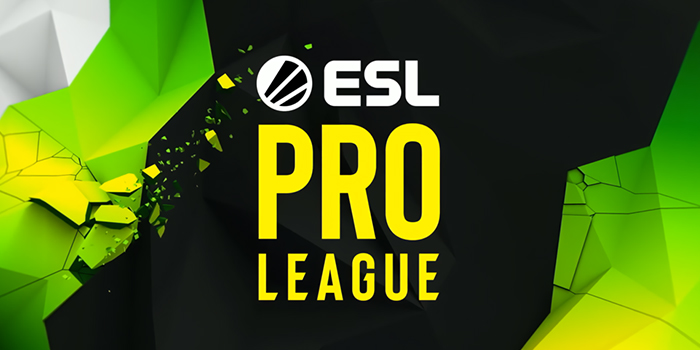
CS:GO has also seen its fair share of viewership success, with hikes up to 113.2% over the previous year, back during the ESL Pro League in April.
It seems that despite the changes, fans are now more engaged than ever with esports. Whether this is due to increased screen time as fans are stuck at home, or from strategies taken by organizers to increase viewership, the verdict is undecided.
“So what happens next?”
Technology is only improving from here. With 5G infrastructure becoming more established around the world, streaming can only stand to spike from here, garnering viewership for esports from viewers who may not have been able to tune in before. This makes viewership, and even online attendance, of esports tournaments and festivals, an increasingly attractive option for event organizers. Though China and Korea remain firmly in the lead for 5G coverage, the US has been making great strides in the coverage major carriers offer.
Even after the pandemic subsides, these lessons will change the way esports are viewed and celebrated. This experience will certainly be utilized to improve the esports ecosystem, like reduced staffing costs with online set-ups or providing safer settings for players at tournaments, utilizing distancing and better health standards. 2020 has made a big impact on the way esports are done, and in many ways this will improve the longevity and stability of the future of the industry.
Live Commerce, a potential cure to the retail industry’s COVID19 plight
September 1, 2020
[EIDETIC INSIGHT] Live Commerce, a potential cure to the retail industry’s COVID-19 plight.
by Kenneth Nienhuser
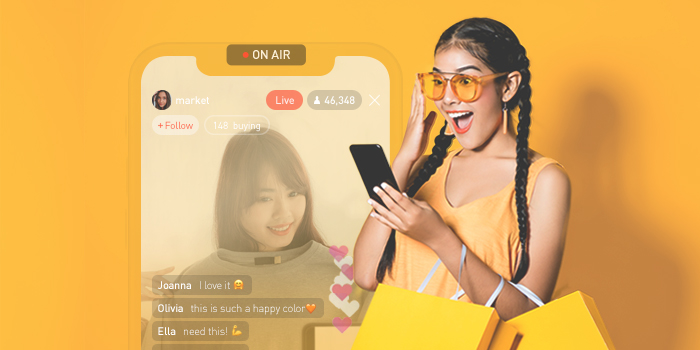
With the pandemic still hot in the US, the retail industry has suffered as customers do not flock to areas like malls, outlets, or department stores as they observe social distancing and self-quarantine. In fact, within the first week of June, more than 2,100 stores closed across the US, and as many as 25,000 stores are expected to follow suit throughout the year. When comparing that with last year’s total store closings of 9,300, the impact of COVID19 is clear to see.
There may be hope, however, for the retail industry, and the answer lies in Live Commerce, a form of stream shopping that allows for customers to watch products be previewed, tried on, and tested on live stream, with one-click or other expedient forms of purchase enabling seamless transactions between seller and buyer.

Source : ©Alizila
China Leads Ecommerce
Does it work? Just ask China. In 2019, Chinese consumers outspent the US and UK in online purchases in 2017, and with an impressive $1.935 trillion in ecommerce sales recorded for 2019, there is some serious cash being spent online. While that is in no small part due to the smart strategies taken by ecommerce giants like Alibaba and Taobao, there’s no denying the incredible impact that live commerce has brought.
In one two hour live commerce streaming campaign, Maybelline sold more than 10,000 lipsticks, which is around $210,000 USD. On Single’s Day of last year, sales from Tmall’s live commerce service garnered sales of $2.9 billion, according to Alibaba Group.
There also does not appear to be any slowing down for the growth of ecommerce in China, as analysts predict this growth will last through 2023.
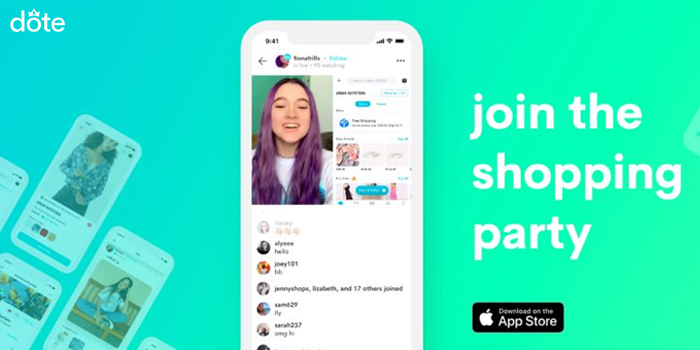
Source : dote, shopping party
Where does it fit into US Retail?
So it’s successful overseas, how can it translate in the US? Well it’s already begun, just not at the scale China or APAC is running at.
Amazon launched Amazon Live in 2019, its own live commerce service, where hot items from the Amazon store are put on display and presented by creators. Dote also released Shopping Party, a feature that replicates the mall shopping trip on your smart phone, complete with influencers streaming trying on outfits and a chat box to interact with them.
The US is late to the game, but that doesn’t mean they can’t bounce back. With online shopping the only viable option for those trapped in quarantine or for those wishing to maintain social distancing, it is an excellent time for retailers to experiment with this highly successful formula.
Distancing Messages from Major Brands in 2020
August 1, 2020
[EIDETIC INSIGHT] Distancing Messages from Major Brands in 2020
by Kenneth Nienhuser
2020 has been a trying year so far. COVID19 spread across the globe, forcing governments and businesses to make tough calls considering employment and operations. In response, rather than their usual messages, brands have responded with forms of creative changes to their brand symbols in a form of meaningful marketing to show that they are in the fight with their audiences.

Source : Audi
“Keep Your Distance”
The automotive industry has altered their brand symbols in inspired ways to emphasize the importance of maintaining social distancing. Audi has created this image, separating the 4 rings for which their brand is known. Other brands like Mercedes and Volkswagen have also joined in on this trend by altering their symbols to account for distancing.

Source : McDonald’s
“I’m loving it (on my own)”
It’s not only the automotive industry that is speaking out. All around the world, brands are telling audiences to practice social distancing. From South Korea to South America, these brands are coming up with creative ways to encourage people to stay apart, at least physically.
McDonald’s golden arches are one of the world’s most iconic images. That is why it is surprising that Brazil’s McDonald’s branch made the shocking choice to separate the arches for the first time ever, creating a sharp contrast between the iconic symbol we know. The message is clear, everyone should be keeping their distance to prevent further spread of COVID19.

Source : mercado libre
“Changing the Handshake”
Social Distancing isn’t the only way to help protect against the spread. Hyundai and Mercado Libre have both changed their symbols to emphasize the need for precautions when interacting with others. Formally connecting seamlessly, these new symbols show off the ‘elbow bump’, a different way to great others without the issue of shaking unwashed hands.
Though times are difficult to navigate, brands are trying to maintain the message that we may be separated now, but that doesn’t mean we will be separated forever.
Brands Responding to the BLM Movement and the Response Given
July 1, 2020
[EIDETIC INSIGHT] Brands Responding to the BLM Movement and the Response Given
by Kenneth Nienhuser
2020 has been a trying year so far. COVID19 spread across the globe, forcing governments and businesses to make tough calls considering employment and operations. Then in the early summer, with the unjust killing of George Floyd by a police officer, protests sprung up around the world in support of the BlackLivesMatter movement and the need for police reform. In response, rather than their usual messages, brands have responded with messages in hopes of reinforcing that they stand with the call to end racism, but in many cases, this message has fallen flat, and the sentiment has appeared forced and insincere.
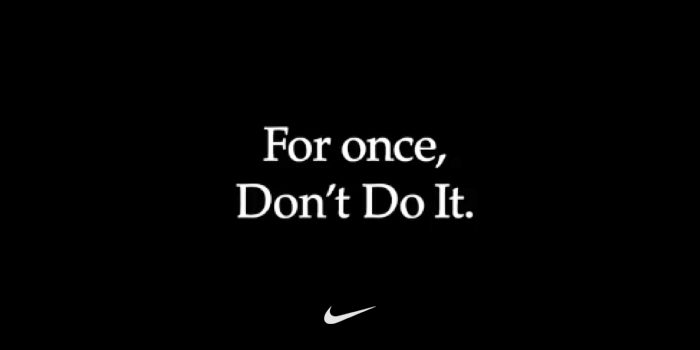
“For once, Don’t Do It.”
On May 30th, NIKE released a powerful message, telling audiences “For once, Don’t Do It.” To emphasize it is time to stop ignoring the issue of racial inequality and racism in America. Nike’s competitors followed suit; Adidas retweeted the brand’s message, in a message of solidarity. The message generated a lot of support, with over 236K likes on Twitter, but at the same time it also came across as hollow to many social media users.
Many commented on how the sentiment was appreciated, but they wanted to know if the corporation was going to do more than just post about the issue. There were many comments remarking on the lack of black and POC representation in Nike’s board members. Others demanded to know how Nike was helping the black community.
To the latter, Nike eventually responded two weeks later with a breakdown of where its contributions go, and to which communities they benefit. Some applauded the transparency, but others criticized the brand for its tax avoidance, and how that was negatively impacting the communities it claimed to be supporting.
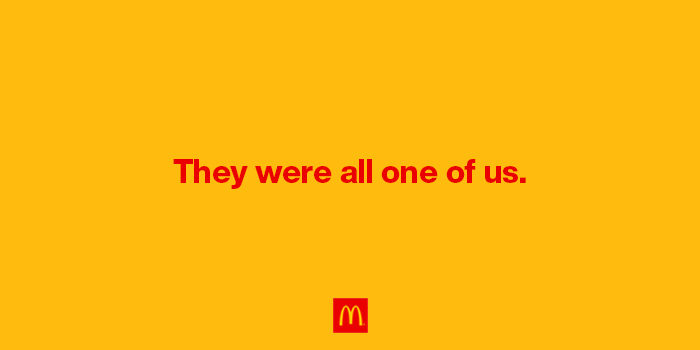
McDonald’s Speaks Out
McDonald’s also spoke out with a unifying message that attempted to try to bring audiences together in the movement for equality. However, the message was poorly received, as many users pointed out that McDonald’s and its business practices had caused considerable harm to the communities that it claimed to be supporting. From low wages to a lack of worker benefits, McD’s was slammed on its post for what appeared to be a hollow statement.
Other users also attacked the message for the contentious banning of black customers in China earlier this year, while others criticized the inclusion of Michael Brown in the list of victims. What was meant to be a unifying message ended up unifying those for and against the BLM movement in an unintentional way, as the majority of users agreed that this was an attempt to virtue signal, and that McDonald’s had failed to reach its audiences.
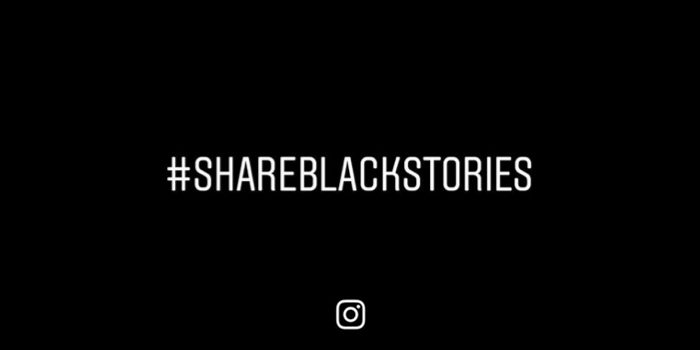
Facebook and Instagram Encourage Sharing
Facebook and Instagram made posts siding with the BLM movement, calling for its audiences to share black stories, and to continue raising their voices so that the names of those lost to police brutality are not lost. To show their commitment, they stated that Facebook would be pledging $10 million in support of ‘ending racial injustice’.
The responses were positive for the most part, with over one million likes on Instagram’s post, the majority of users agreeing that this was the time for using their voices to continue bringing awareness to the profiling and injustices experienced by black communities.
Using your brand to speak out about morality comes with its pitfalls. Audiences remember hypocrisies, and they are fearless to call your brand on it. In 2020, moral marketing has taken over, and consumers now want to hear more than just words, they want to hear how your brand can help. So be honest, be sincere, and most importantly, show how you can help.
Virtual Experiences are Evolving
June 1, 2020
[EIDETIC INSIGHT] Virtual Experiences are Evolving
by Kenneth Nienhuser
Virtual experiences have gained a lot of traction in recent months, connecting audiences in innovative ways on platforms like games, social media, and more. Here are some of the ways brands have created unique experiences while optimizing virtual platforms to capitalize on digital audiences
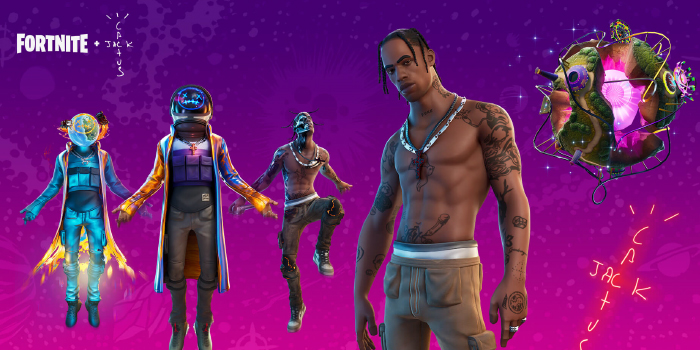
Source : www.epicgames.com/fortnite
Astronomical: Fortnite and Travis Scott
Virtual concerts are nothing new, but the latest collaboration between Fortnite and Travis Scott for the Astronomical experience showed that the concept has a lot of potential to be tapped into. In order to build hype for the premiere of Travis Scott’s new track “THE SCOTTS” Fortnite worked with the artist to create a virtual concert experience for fans the world over to enjoy. Over the course of 3 days, 5 showings were held, with over 27.7 million unique users attending, for a total of 45.8 million views in game, according to Fortnite’s twitter page. Though this was not Fortnite’s first virtual concert project, nods to Marshmello, it did smash their previous concert’s attendance by more than 17 million attendees.
Travis Scott also reaped the benefits of this, as his new track, which premiered in the video, reached the number 1 spot on the billboardfor the week of May 9th. It reached the top of digital song sales as well, reaching 67,000 downloads by the end of April.
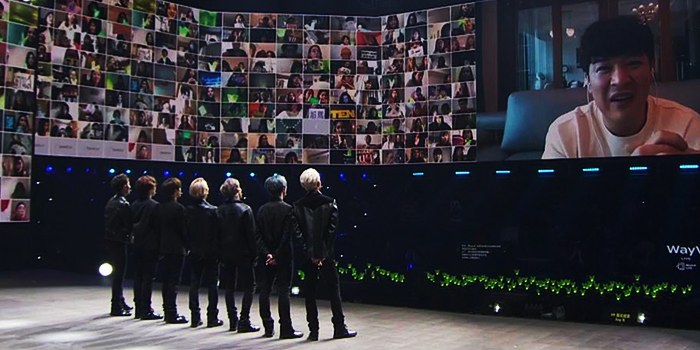
Source : SM Entertainment
VLIVE and K-pop
Fortnite isn’t the only platform capitalizing on the virtual concert scene, as the online streaming and interactive platform, VLIVE, is catering to global K-pop fans with concert series like Beyond LIVE. VLIVE allows for audiences to interact with their idols by allowing them to ask questions as well as being able to video chat on stage, and Beyond LIVE is a collaboration of multiple K-pop artists for millions to watch perform. The concert series takes place every Sunday from April 26th to the end of May. Beyond Live is offering some big name groups like TVXQ! And Super Junior. If the first concert, featuring Super M, reaching 75,000 consecutive viewers from 109 countries is any indication, the concert series certainly shows promise.
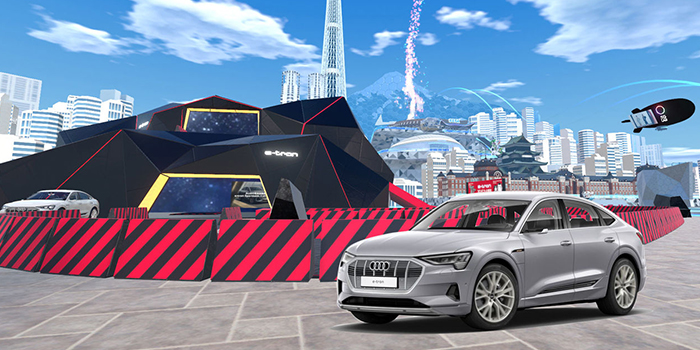
Source : magazine.audi.com.au/article/virtual-world
AUDI and Virtual Market 4
Exhibitions have struggled this year as a result of the global pandemic, forcing exhibitors to explore new avenues to reach their audiences. One such method to be explored is virtual reality. Enter VR Chat, the virtual reality chatting platform where users can interact with each other using custom avatars. In VR chat, the Virtual Market series, or Vket, offers exhibitors the opportunity to run exhibits in a virtual space where attendees can experience their products from the comfort and safety of their own home. Last year, the exhibition recorded over 710,000 visitors, which attracted larger exhibitors to participate in this year’s event.
In the virtual “Para-real Tokyo” world, Audi, along with 41 other companies and 1400 stores, came to offer virtual audiences a unique VR experience with their product. Attendees were able to take the e-tron Sportback for a spin on a virtual track, as well as hear about the vehicle’s USPs from an on-site Audi specialist. Attendees were expected to exceed one million this year, and announcements for the next Virtual Market has already been announced for later this year
Virtual Experiences are Thriving
COVID 19 has negatively affected marketing and the way brands are able to interact with their target audiences in many ways, but this has also presented a chance for them to explore new and creative ways to reach out. Virtual experiences have shown they have a lot to offer in this regard, and the potential seems to only be increasing as time goes by.
Speaking to Consumers in a COVID-19 World
April 29, 2020
[EIDETIC INSIGHT] Speaking to Consumers in a COVID-19 World
by Kenneth Nienhuser
With social distancing in full swing, many are stuck at home as everyone around the world is waiting out the pandemic. This has hit the economy in a severe way, with the global economy suffering a 12% contraction during the first quarter of 2020, according to JP Morgan. As a result, companies around the world are seeking methods to increase sales and reach audiences at home. Whether this be through the leverage of technology, meaningful marketing techniques, or a reassuring voice during this trying time, these brands stand out for their quick adaptations during the global pandemic.

Source : Volkswagen
Taking it Digital
With most major B2C events being canceled due to health and safety reasons, automotive brands had to transform their traditionally offline exhibits into digital premieres that would reach audiences across the globe from the comfort of their own homes. Volkswagen took this opportunity to create a unique, virtual, solution in response to the cancelation of the Geneva Motor Show, by creating their own virtual showroom. The Volkswagen virtual showroom allowed digital ‘visits’ of the VW exhibition floor, where several models were on display. Virtual attendees are able to navigate their way through the showroom floor, listening to presentations about the vehicle USPs or freely wander around. They are also able to customize the vehicles they view by selecting the model’s paint job and rims. With the delay or cancelation of other motor shows like NAIAS, the automotive industry is exploring new ways of reaching audiences, and it stands to reason that automotive brands will find more ways to leverage technology to reach customers digitally.
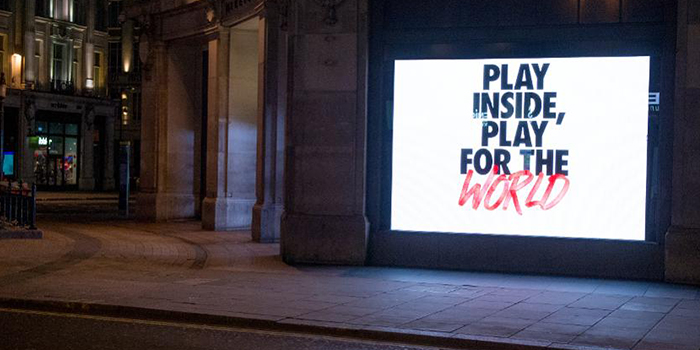
Source : NIKE
Marketing with Meaning
The current pandemic has also presented an opportunity for brands to present themselves in a more generous and socially conscious light. Meaningful marketing allows for brands to connect with their audiences by interconnecting their brand image with a campaign that benefits audiences. NIKE is no stranger to marketing with meaning, having taken stances behind social issues, like their 2018 Dream Crazy campaign featuring the controversial Colin Kaepernick, a prominent Black Lives Matter activist, as well as notable campaigns like their Find Your Greatness series that encouraged audiences to pursue their own paths to greatness, no matter how they viewed it. This time, the message is to stay home, not just for their sakes, but for the world’s, rallying behind the call to Play for the World. The campaign has been centered around providing support for those in isolation while encouraging those at home to stay active.
Nike’s Play Inside campaign offers access to their NTC Premium membership for free, further incentivizing athletes to help the world recover from the pandemic, and maintain social distancing by training indoors. Since starting their community workouts, the combined views on their community workouts page has surpassed 1.5 million views, with more audiences turning in every week.
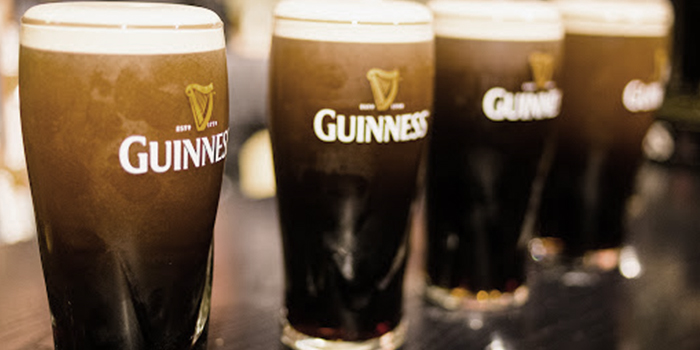
Source : GUINNESS
Positivity Counts
COVID-19 has done a number on people’s worldviews, as many are finding themselves in low spirits due to the effects of the pandemic. This is why some brands have decided the best message they could send now is one of reassurance. Guinness has also sent out a message of reassurance, as the celebration of St. Patrick’s Day was understandably quelled due to the pandemic and the danger of social gatherings. Large parades that are iconic of the festivities will not be held this year for health and safety concerns. Thus, the brewing company released a video stating that “we’ll march again” to their audiences, signifying that there will always be another time to march for celebration, and that this pandemic will not be the end of good times, or tradition. The brand also announced its commitment to the Guinness Gives Back Fund of $1 million in support of its local community and hospitality workers who have fallen on economic hardship due to the global situation. While everyone maintains social distancing, hospitality workers are sore for business, and this support will surely not go unnoticed.
In essence, show you’re still there
Regardless of how your brand chooses to navigate these times, it is important to remind your audiences that you are still there, and that you’re speaking to them. It is easy for people to feel like they are alone in this, with isolation and social distancing in effect, so it is important, now more than ever, to speak to your consumer base, and let them know we are all in this together.
The Future is Human
February 10, 2020
[EIDETIC INSIGHT] The Future is Human
by Kenneth Nienhuser
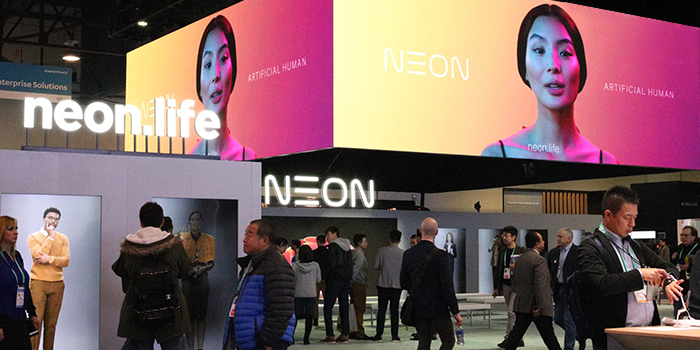
Source : https://www.facebook.com/pg/neondotlife/posts/
The Future is Human
At CES 2020, AI was out in full force. From automobiles and home appliances to cities themselves, AI seems to be destined to become more integrated into our daily lives. As cold and calculated as that may seem, there was one San Francisco-based start-up at CES this year that wanted to show the more human side of AI with their new human-interface interactive technology. This year, I had the pleasure of visiting the booth of STAR Labs, an independently operated Samsung subsidiary, which has created the NEON, a “computationally created virtual being” that resembles an actual human being that is supposed to further bridge the gap between humans and the world of Artificial Intelligence.
NEON and the Brains Behind Them
STAR Labs began as a small team of brilliant researchers and scientists, led by their CEO Pranav Mistry, former senior vice president for Samsung Electronics. The goal is singular in focus: to create the next iteration of communication, and that iteration comes in the form of the “Artificial Human”, or as they’re officially called, the NEON.
At first glance, when talking to a NEON, it may appear that you are conversing with another voice assistant that just happens to look human on screen. However, STAR labs have created NEONs to not just be the next Siri or Alexa. NEONs aren’t designed to be your music player or weather checking assistant. They look and behave like another person, showing emotions, intelligence, and patterns of speech. Meaning they are meant to behave as our companions, confidantes, and even our collaborators. They learn and evolve with you, creating memories from past interactions, acting more as a close friend rather than a ‘know-it-all’ bot you can check the distance to the moon in giraffes with (which is 69,890,910 giraffes by the way).
NEONs are also not customizable. They resemble or are directly modeled after real people, and each have their own unique personality, complete with expressions, movements, and dialogs. This means that the focus will be placed on interaction through conversation, rather than more superficial aspects like clothing or body type. These new beings are meant to do what other voice assistants have failed to do before them, actively engage users.
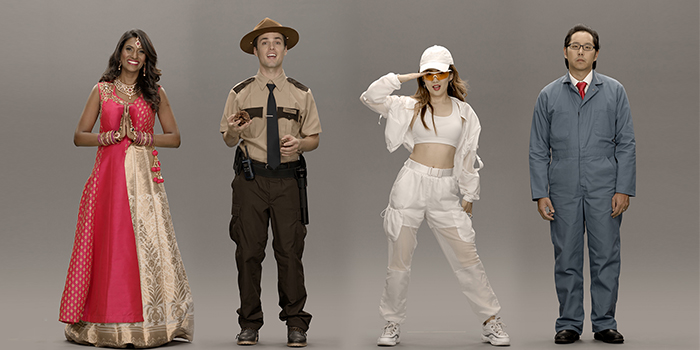
Source : https://www.facebook.com/pg/neondotlife/posts/
Your Next Experiential Marketing Asset?
Though they are designed to be more personal in interaction, the NEON is not set to be sold for personal ownership any time soon. The business model for these companions is more of a subscription service, with businesses and organizations being able to lease their services for a variety of duties, like a translator, service representative, or concierge. When speaking with a representative from STAR Labs, the purpose of this ‘domain-specific’ deployment of NEONs was to make sure that they were not used for purposes beyond their intended use.
For experiential marketing, a deployable form of interactive assistance at booths and events sounds appealing. Being able to reduce the amount of manpower, and all costs that coincide with that, with an efficient, personable staff member that can act as a presenter, information desk attendant, or even product model is a prospect that is hard not to get excited about. And with NEONs being digital, a NEON could do presentations in an event in Shanghai in the morning in Shanghainese and then work a different exhibit in Los Angeles in English and Spanish later the same day. These advantages will surely help NEONs catch on once the technology becomes available.
Still in the Works
For now, the NEONs are a far way off from seeing wide-spread use. This year’s exhibit showcased a very limited use of the interactive technology at work, with most displays only running pre-recorded demonstrations. When talking with our STAR Labs contact, there was a Phase 2 in the works, but the release date for this seems to still be far off. Either way, we are looking forward to the next step in the Artificial Human evolution.
Thumbnail Image Source : www.digitaltrends.com
The Subscription Economy Game-Changer: Cloud Gaming
December 19, 2019
[EIDETIC INSIGHT] The Subscription Economy Game-Changer: Cloud Gaming
by Kenneth Nienhuser
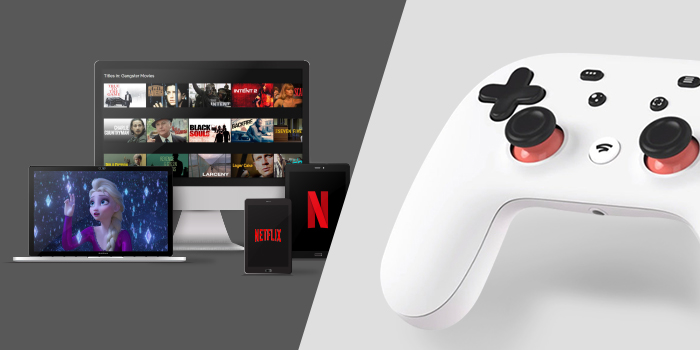
Video Streaming: The Reigning Champs
Our entertainment is dominated by streaming services, and at the top sits the video subscription service industry. Titans like Netflix, Amazon Prime, iQIYI, and others hold the throne because they offer the ability to stream videos at home or on the go, making them highly accessible, and with access to thousands of movies and shows on demand for less than a movie theater ticket, it’s clear to see where the popularity stems from.
Netflix stated that they have over 151 million paying subscription holders, with shared accounts totaling more than 300 million viewers, while iQIYI claims to have over 50 million daily active PC users, and monthly active user counts exceeding 450 million.
While most people are familiar with these services, and many of those individuals have used them, they might not be aware of the new potential contender for the streaming throne, cloud gaming, nor the subscription services that have formed alongside it.
The Contenders
Before we get into why these are potential usurpers, let’s discuss first what exactly cloud gaming is. Cloud gaming is the process of using remote hardware to play game games on devices with consistent internet access. Users can play the latest games from remote, high-end hardware on any device with a steady internet connection, like Smart TVs, tablets, phones, and older PCs. This brings PC and console games that were tethered to their systems out into the mobile sphere, and also makes them accessible for those who could not afford the latest hardware.

This technology translates to the recent rise of game subscription services. Earlier this year, Apple launched its own game subscription service called Apple Arcade, which was closely followed by a torrent of other subscription services offered by tech and game industry giants like Microsoft, Nvidia, EA, UPlay, and more. These subscriptions offer access to hundreds of titles for subscription fees comparable to those of video streaming services.
Recently, these services have been able to expand to the mobile realm due to introductions of 5G networks. With 5G, input lag (the time between a button press and the movement of the character, which is dictated by the speed at which information travels between the device and the remote server) has become negligible. That is why countries like Korea and Japan have seen a recent surge in partnerships between telecom providers and game subscription holding companies, like the recent contracts between SKT and XCloud in Korea, and Softbank and GeForce (which works with users’ Steam libraries) in Japan.
The Unlikely Opponents
So why does this matter for video streaming services?
Well, it’s no secret that the game industry is huge. Growing at an average rate of ten percent a year, in 2018 the game industry reported 139 billion USD in revenue, and it is only projected to get larger from there. However, the market was segmented largely between three sectors, PC, console, and mobile gaming. Though PC and Console commonly share titles, titles from these two sectors did not largely cross over into the mobile industry, and vice-versa. Now with cloud gaming, these PC and Console titles can be accessed everywhere, allowing for exponential growth of game subscription services.

With mobile devices now on the table, popular titles like Fortnite, League of Legends, and others, could see a surge of players through cloud gaming as they gain previously unobtainable users who either did not have a PC or could not afford to upgrade their current systems.
This creates a dilemma for the current streaming subscription kings. Gaming has been an issue for video streaming services in recent years, as audiences spend their time playing rather than taking in paid video content. Netflix has gone so far as to share with their shareholders that they compete with (and lose to) Fortnite, the wildly popular battle royale title, over their competitors. If titles like Fortnite can make the jump into what was considered a safe segment of the market for video streaming, it could spell trouble.
Still Some Ground to Cover
For now, it seems that the video streaming subscription industry need not fret.
Although relatively speaking, most of these subscription services are comparable in price, like Netflix’s subscription rates at 8.99 USD a month, or Disney+’s cheaper rate of 6.99 USD. This can be compared to services like Apple Arcade, who offer a rate of 4.99 USD per month, or EA’s Origin Access, which comes out to 99.99 USD a year.
There are, however, some gaps. One example would be the XBOX Game Pass, which comes in at 44.99 USD per quarter, or around 180 USD a year. Then there’s Google Stadia, where you must purchase games at full price to be able to access them on the cloud. These can be a tough sell for consumers.
There are also issues to overcome with 5G networks not being globally available, making these cloud gaming subscriptions a much less valuable package in other regions. Though they have been enthusiastically embraced in countries like Korea and Japan, they may not catch on as quickly in areas like the US and Europe.
Though the impacts of game subscription services may not be clearly visible as of yet, it is a good idea to keep an eye on this growing industry. If we have learned anything from over the years, it is that the future is mobile, and whether it be gaming, shopping, or video streaming, the more accessible these services become, the more attractive they become to global audiences. Gaming subscription services paired with cloud gaming technology are certain to make waves in the streaming and mobile industries.
Kenneth Nienhuser is the Director of Business Development of Eidetic Marketing, USA Office.
Image editing courtesy of Jed Jung, Sr. 2D Designer of Eidetic Marketing, Korea Office.
About Eidetic Marketing
EIDETIC crafts unforgettable experiences through the illumination of a brand’s core nature.
Ever striving to create the new, we design and actualize brand personality in a way that will engrave your brand to memory.
Global eSports competition WCG 2019 Xian Tournament Schedule Released
March 27, 2019
https://vimeo.com/326964749
WCG (World Cyber Games), or the game Olympics as some call it, is the tournament that began in 2000, giving birth to the world’s greatest eSports star “Moon” (JangJayHo) and others. Unfortunately, WCG, which had been cheered on by millions of gamers, was discontinued in 2013. However, after a 6 year gap, the event world eSports fans have been waiting for will finally return in 2019.
WCG is an eSports competition for nations to compete with one another. In 2000 with the support of Samsung Electronics, WCG provided the gateway for gamers to become pro, and provided for others the spectacle of watching top-tier games between legends. Beginning with StarCraft, a variety of titles were chosen for competition until recently, regardless of genre, such as popular titles such as DOTA 2 and Counterstrike. Then, much to the disappointment of gamers, 2013 marked the end of WCG’s short life.
However, under the new slogan “BEYOND THE GAME, MORE THAN SPORTS” WCG 2019 has returned with new international gamers. From July 18th to the 21st, WCG will share not only eSports, but new technology, a music festival, TED talks, conferences and more in Xi’an, China.
WCG 2019 Xi’an has 6 official titles.
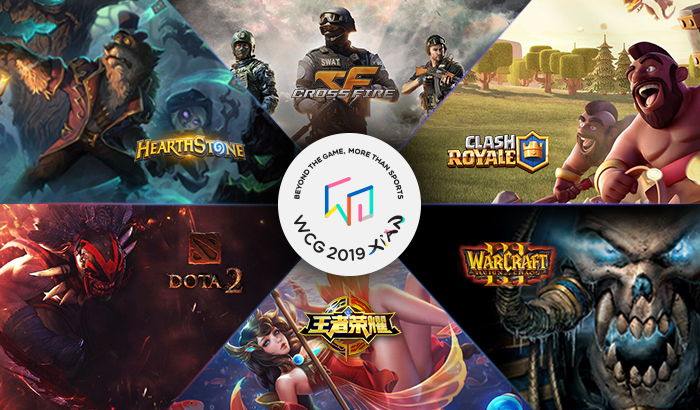
WCG MASTERS will progress with the target of global gamers. Preliminaries will proceed online beginning in March and from May athletes from each country will be chosen to represent their countries through offline qualifiers. There will be 4 titles to qualify for: DOTA 2, Warcraft 3, Hearthstone, and Clash Royale.
WCG PREMIER will be restricted to Chinese gamers. From April online preliminaries will begin and from June the representative players will be selected through offline qualifiers.
This competition is also excited to host the “All-Star Invitational” for the globally popular mobile game “Clash Royale” where the 2019 season 1 pro league champions will be invited.
The regional qualifiers for Asian, European, and American gamers will be on the Battlefy platform, and the Chinese qualifiers will be held through the Varena platform. Applications for attending the qualifiers began March 12th, and many gamers have already been accepted.
Applicants can apply through the official WCG sites below
-
- Global application: http://wcg.com/
- Global application: http://zh.wcg.com/
We hope those who wish to go pro or gamers who love their game do not miss this opportunity and hurry to offer their support.
The Global Branding & Experiential Marketing Agency EIDETIC MARKETING is the official agency of WCG 2019 Xi’an and has been working with WCG on its development since being chosen last January. EIDETIC MARKETING is making every effort to make sure that the opening and operations of WCG are a success, managing everything from branding and space design to customer itinerary. EIDETIC MARKETING’s CEO Ashley S. Jung has stated that “WCG 2019 Xi’an is an important event to end WCG’s six year absence. It is an honor that WCG has allowed EIDETIC MARKETING to help present the best time for gamers awaiting the return of WCG.
Global Experiential Marketing Agency, Eidetic Marketing’s 5 Must Know Tips for MWC
November 23, 2018
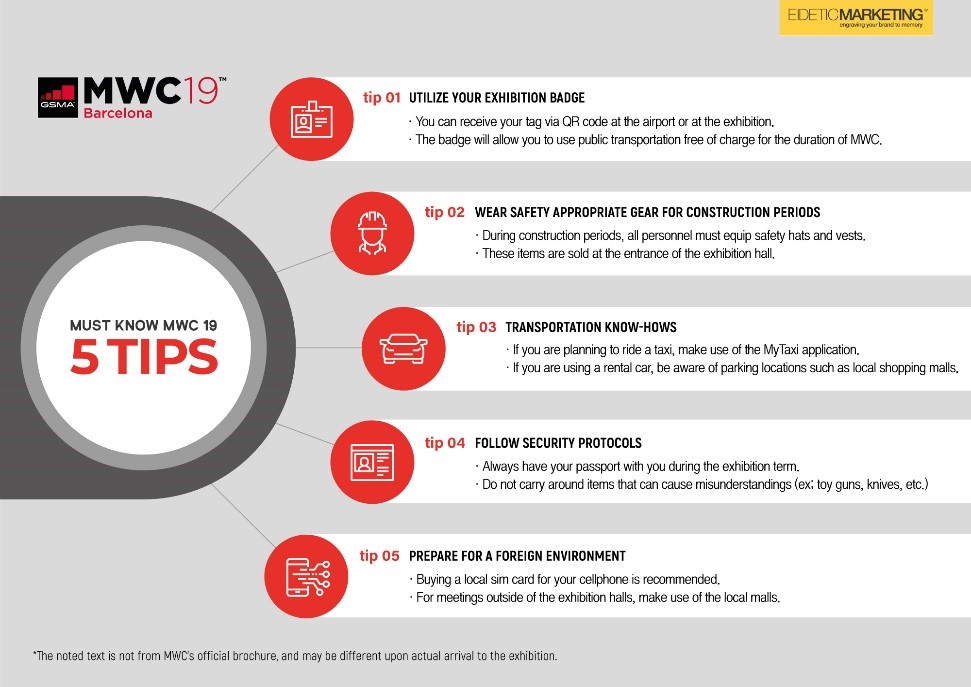
Along with CES and IFA, MWC (Mobile World Congress Barcelona) is one of the top 3 global IT/Wireless expositions. Over 2,100 global IT companies participate in the exhibition, including world renown brands like Google, Microsoft, Samsung, LG, Huawei and more. During 2018’s MWC in February, there were more than 104 thousand participants, and this number continues to grow every following year. As the 4th quarter of the year is passing by, more clients are starting to have queries about the MWC. As an experiential global marketing agency that has participated in the MWC, Eidetic Marketing will offer 5 must know tips for MWC participants.
First, Utilize your Exhibition Badge.
As a top-tier global B2B Exhibition, entrance fees should be expected to be on a high price point. During the 2018 MWC, the lowest priority entrance ticket cost roughly $900. These entrance passes can be issued at not only the exhibition hall, but also the airport. You can seamlessly receive your pass by using the QR code that you were given upon purchase. With this pass, you can also use public transportation for free during the exhibition period.
Second, Wear Safety Appropriate Gear for Construction periods.
MWC is held in the 9 halls of Fira Barcelona Gran Via, a venue that is approximately 30 times the size of Korea’s Coex. As renown as this venue is, the safety rules are strictly enforced. During construction periods, everyone involved is required to equip safety helmets and vests. However, there is no specified product or restriction on what type of equipment one is to wear. Therefore, it is possible to save money by procuring the products ahead of time. If you fail to bring your own equipment, you can also purchase the hats and vests at the exhibition hall, albeit for a higher price.
Third, Consider Transportation Methods.
Barcelona is Europe’s top 6th visited destinations. The city gets especially more tourists in February and March for the duration of the MWC. Taxi drivers may not be well acquainted with speaking English, so you should have materials ready, such as a print out of your destination and address. Other than taxis, you can also opt to use personal carpool services called MyTaxi, Barcelona’s equivalent to Uber. For those who choose to use rented cars, the driving is not as hectic as other European nations. However, during the MWC period, there are many patrol officers that focus on traffic violations. If you are caught by one of these officers, foreigners are charged 100 Euros on the spot. There are apt parking spaces in the exhibition venue itself. However, depending on the hall, this may lead to long walking distances. Therefore, it is important to understand the area and choose a parking lot accordingly. The nearby shopping mall, Gran Via 2 is an option that offers free parking on Sundays.
Fourth, Follow Security Protocols.
After 2014, Europe became more conscious of possible terrorist threats. The MWC period, in which more than 100 thousand people gather together is a time when security protocols are strictly enforced. Individuals should have their passport on their person at all times as a form of identification. Upon entry into the venue, all participants and their luggage are searched through by security officers. All boxes, bags or enclosed luggage must be opened for inspection. Visitors should also not carry any items that can cause misunderstandings (for example, toy guns or knives, etc). Through the MyMWC application, one can use their digital exhibition badge as a form of identification as well. However, due to possible issues due to hall entrance or security personnel, visitors should have their passports as a failsafe id.
Fifth, Prepare for a Foreign Environment.
Spain is a country that is not very familiar with the English language. It is recommended that participants learn basic Spanish before the exhibition. For exhibitors who are expected to need telecommunication services during the period should consider buying a local sim card beforehand. This option is more comfortable than wifi and can be purchased upon arrival at the airport. Vodafone is the recommended brand for Europe. MWC’s venue, Fira Barcelona Gran Via, is grandiose and offers many pleasant areas for business meetings. If a meeting outside the exhibition hall is needed, the nearby shopping mall, Gran Via 2, also offers plenty of stores and cafes to engage partners or clients.
Eidetic Marketing is a global event & experiential marketing agency that is based off of its LA headquarters. It has multiple branches around the world in Korea and China as well. The company has experience participating in a multitude of global exhibition and events, such as MWC, CES, Gamescom, E3, and many more. Encompassing a wide portfolio and a plethora of world renowned clients such as Samsung, LG, Tencent, Google, etc., Eidetic Marketing has successfully provided total marketing solutions on a global scale. Eidetic Marketing’s CEO, Ashley Jung, offered his insight via this article to assist other prospective marketers in understanding the MWC.
If you have any additional questions about the MWC, please contact info@eideticmarketing.comfor more information.







